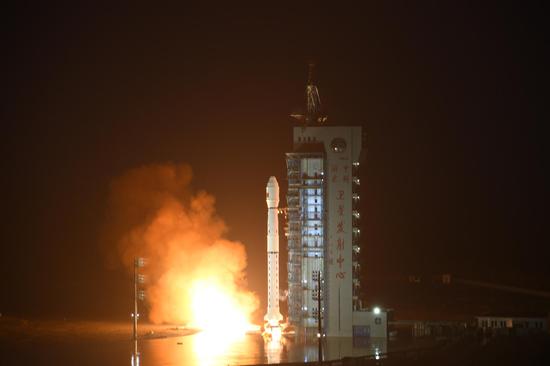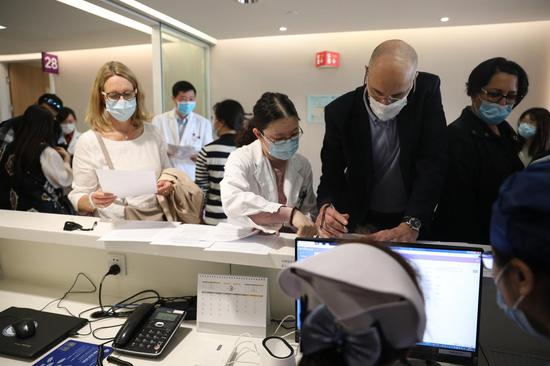
Customers buy foods in a supermarket in Mujie village, Guizhou province, on Nov 25, 2020. [Photo/Xinhua]
Similar advantage
Keyu Jin, an associate professor of economics at the London School of Economics, said China has an advantage similar to that of the United States in having a big domestic market.
"China enjoys the advantage of having a very large domestic economy, so that much of its growth can be generated internally. This is also the case in the United States," she said.
The new development model also comes after trade tensions between the US and China, including attempts to deny China access to components such as semiconductors.
Louis Kuijs, head of Asia for Oxford Economics, an economics research consultancy, said it is therefore important for China to reinforce its domestic supply chains and develop more of its own technology.
"Achieving self-sufficiency in technology is an important part of the new policy agenda. The challenge for China is to make this sustainable. If it is too much State-directed and attempted using subsidies, it will not be so easy to achieve."
Tom Rafferty, regional director for Asia for The Economist Intelligence Unit, a global business intelligence organization, said China is not unique in Asia in wanting to be more self-sufficient.
Self-sufficient approach
He pointed out that India has launched a "self-reliance" movement to address its supply chain vulnerabilities, and Indonesia is following import substitution policies to support domestic industry.
"In China, the emerging focus on self-sufficiency comes amid strained relations with the US. We see these concerns translating into greater focus on bolstering domestic demand, especially household spending, while efforts to move up the value chain will create opportunities in the high-end technology, energy and healthcare sectors," he said.
He believes that one trend that may result from this could be foreign companies having to localize their business operations in China and in Asia generally.
"It will mean more investment in on-the-ground research and development, expansion in local staffing and operations, and the cultivation of deeper regional partnerships and collaborations. Doing this, while managing calls for 'reshoring' in home markets, will require significant strategic and political dexterity," he said.
Jing Ulrich, vice-chairman of global banking and the Asia-Pacific at investment bank JP Morgan, said dual circulation was the right strategy for China to pursue following a "remarkable V-shaped recovery" from the pandemic.
"The stage will be set at the start of the next five-year plan for a continuation of efforts to transform the economy toward sustained, high-quality growth," she said.
Tse of Gao Feng Advisory, who is one of China's best-known management consultants, said China might have to rely heavily on its own domestic market during the early part of the next five-year plan.
"The pandemic has had a huge dampening effect on the economy of many Western countries, while China is experiencing a quick economic recovery after it has effectively contained the pandemic," he said.
"As the external circulation may not get back to its full throttle anytime soon, the internal circulation becomes very important," Tse added.
Roach, a former chief economist and Asia chairman of investment bank Morgan Stanley, is convinced the dual circulation strategy has the potential to deliver China's long-term economic goals.
As a modern advanced economy, China "will be successful in drawing on dual circulation as the means toward realizing its key strategic objectives", he said.




















































